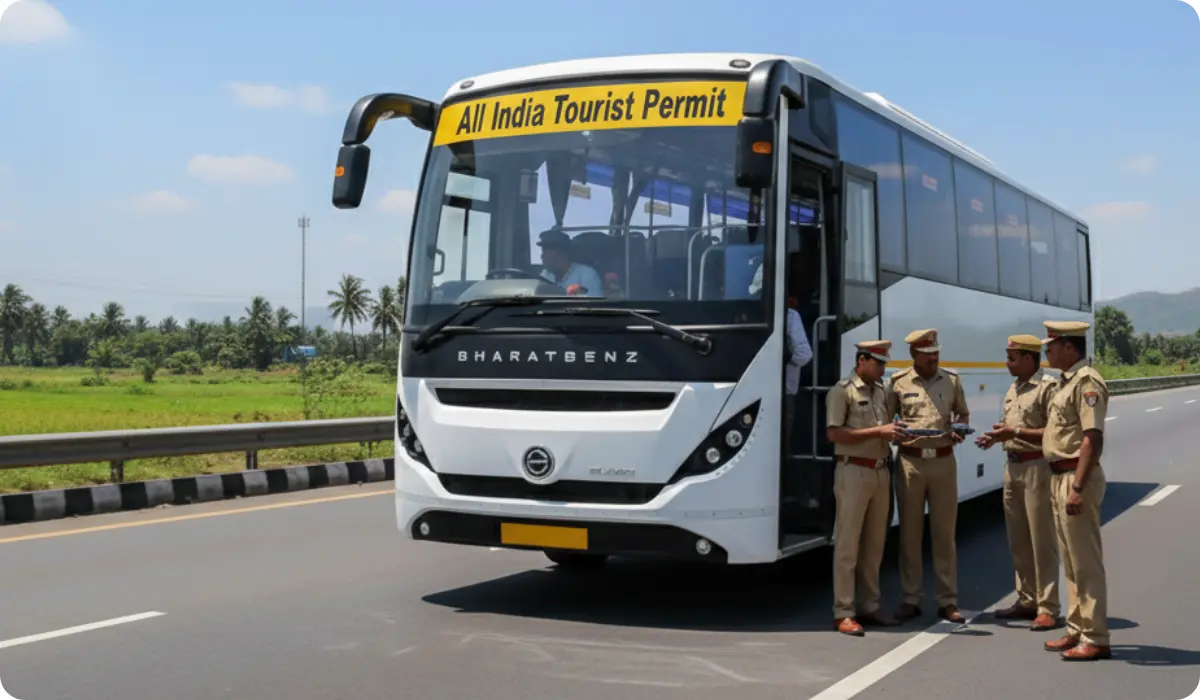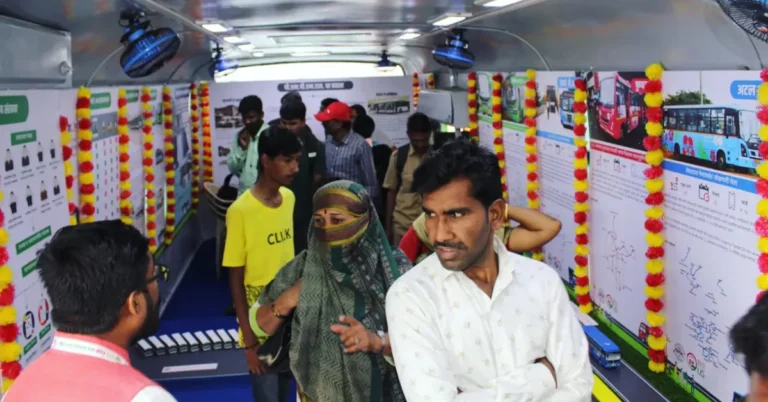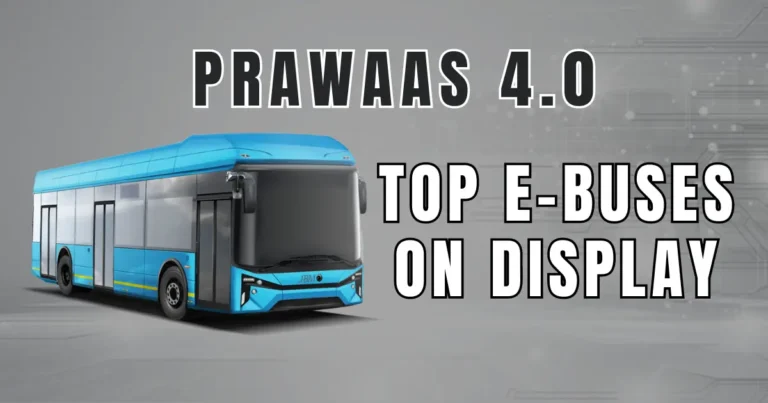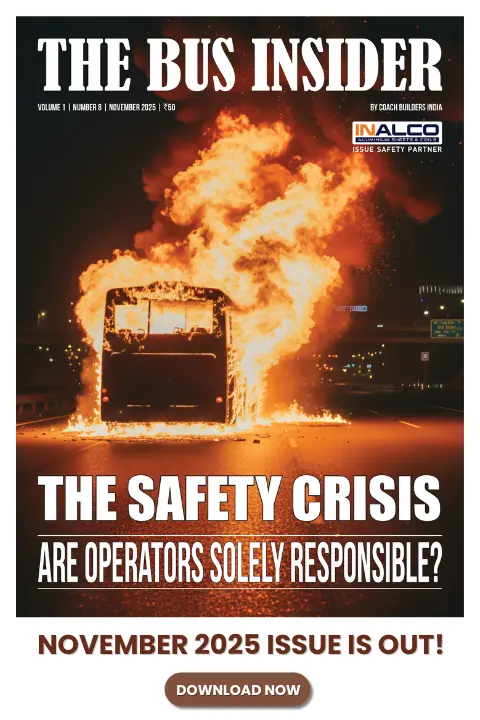All India Tourist Permit: From Vision to reality, Boon to Bane 2021-2025
Adv. Nataraja Sharma highlights how the All India Tourist Permit Rules, launched with the vision of “One Nation, One Tax,” have faced setbacks due to vague drafting, uneven taxation, and misuse, calling for urgent reforms to restore fairness and protect genuine tourist operators.

The concept of the All-India Tourist Permit (AITP) is not new. Even prior to 1999, tourist vehicles were allowed to operate across states, but the process was cumbersome. Permits relied on individual state authorizations, requiring operators to pay taxes at border check posts, leading to higher costs, frequent delays, and opportunities for corruption.
As India’s travel and tourism industry grew, the demand for a “One Nation, One Tax” system intensified. This vision was realized in April 2021 with the launch of the AITP Rules under the leadership of Prime Minister Narendra Modi and Union Transport Minister Nitin Gadkari.
Understanding the Draft AITP Rules 2025: Key Concerns
The 2021 Launch: A Post-COVID Relief
The timing was significant. The travel industry, battered by COVID-19, needed fresh support. The AITP rules promised:
- Seamless nationwide movement of tourist buses.
- Removal of border checkposts.
- Simplification of compliance under the banner of Ease of Doing Business.
However, vague drafting led to confusion. Terms like “Permit Fee” versus “Road Tax” were unclear. Several states, especially in the South, where road tax per seat ranges from ₹3,000 to ₹4,400, opposed the rules, fearing loss of crucial revenue.
AITP Buses Cannot Pick Up Road side Passengers: Delhi Transport Dept
The 2023 Amendment: Tackling Misuse
By 2023, issues of misuse surfaced. Operators began registering vehicles in North-Eastern states, where taxes were far lower (₹45,000–₹60,000 annually), creating unfair competition with genuine tourist operators in high-tax states.
The amendment tried to fix loopholes, but challenges remained:
- Ambiguity persisted – The word “Tourist” was still loosely defined, enabling night buses and intercity services to misuse AITP.
- No clarity on road tax – States continued to demand it, undermining the promise of One Nation, One Tax.
Weak enforcement – With no strict penalties, many owners paid taxes only when caught, fostering corruption.
Buses With AITP Can Have Multiple Pick Up Points? Explained!
The 2025 Amendment: A Course Correction
The 3rd Amendment in 2025 introduced more checks, including:
- Mandatory Vehicle Location Tracking Devices (VLTDs).
- Uploading passenger lists 24 hours before travel.
- Requirement to touch the home state once every 45 days.
- Revenue-sharing mechanisms between states.
Yet, deeper structural issues remain unresolved. Southern states still resist AITP, citing constitutional rights over taxation. The lack of a uniform national tax policy is the biggest barrier to true implementation.
Uploading the passenger list more than 24 hours in advance is impractical and may result in revenue losses for operators. Furthermore, the current requirement for vehicles to report to their home state every 45 days creates unnecessary administrative burden and opens the door to potential corruption.
Even under the Motor Vehicles Act, similar issues have persisted. Ideally, vehicles should only be required to return to their home state once every 90 days.
It is also concerning that vehicle registrations are being issued in states such as Arunachal Pradesh, Nagaland, and various Union Territories without proper inspection or verification.
This practice undermines regulatory standards and raises serious questions about the integrity of the registration process in these regions.
Kerala AITP Row: Buses With AITP Can Function Like Stage-Carriage Buses Says MVD Officials
Tax Evasion Becomes Easy
Due to the absence of a penal provision and the lack of a date-to-date adjustment mechanism for AITP tax, there is widespread tax evasion. This information is readily available on the Union Government’s portal.
The resulting revenue loss not only affects the government’s income but also creates unhealthy competition among vehicle owners who comply with the rules.
This Bus Operator from Assam Turned the Worst Seats into the Hottest Tickets
Who Really Benefits?

Instead of supporting genuine tourist operators – whose buses typically run seasonally or occasionally – the AITP has inadvertently become a boon for night service operators running daily intercity and intracity services. These commercial operators now dominate the use of AITP, while true tourist operators continue to bear heavy tax burdens in their respective home states, putting them at a significant disadvantage.
For example:
- In the North-East, the annual tax per bus may be ₹60,000.
- In the South, the quarterly tax alone is between ₹1.2–1.8 lakh.
This disparity has made genuine operators uncompetitive and discouraged tourism investment.
Diwali Special: How Bus Operators Gear Up for India’s Festive Rush
Security and Governance Concerns
The removal of check posts, while progressive, has also created risks. Reports indicate buses from Nepal and Bangladesh borders are being used for illegal transportation of goods like drugs and other things, which is dangerous to the internal security of the nation.
Without uniform enforcement, checks, and minor restrictions, these loopholes threaten both safety and revenue integrity.
IRA Travels’ Kaja Prem Lal Exposes the Hidden Cracks in India’s Bus Industry
The Way Forward
For AITP to succeed in its true spirit, certain reforms are essential:
- Limit permits to five states per authorization: This will simplify tax sharing and improve oversight.
- Separate permits for tourist and intercity buses: So that genuine tourist operators are not sidelined by daily service providers.
- Introduce a uniform national road tax policy: The heart of the “One Nation, One Tax” vision.
- Stronger and transparent enforcement: Penal provisions should rely on digital systems, reducing RTO discretion and corruption.
To ensure sustainability and protect genuine tour operators, there is a pressing need for further amendments to the current framework. These changes should be made through informed discussions that take into account the diverse geography and operational realities across the country.
Without such reforms, the All India Tourist Permit system risks becoming a bane rather than a boon for the very sector it was meant to support.
The All India Tourist Permit (AITP) Rules, introduced in 2021, were a bold and visionary attempt to reshape India’s tourism and transport landscape. The intent of Hon’ble Minister Nitin Gadkari was commendable; however, the execution faced significant setbacks due to resistance from states, vague drafting, lack of uniform taxation, misuse by certain operators, and inadequate escalation of issues by state transport departments to the Union Government.
Nonetheless, suppose the Union and state governments can collaborate to establish a fair, transparent, and uniform regulatory framework. In that case, the AITP can still fulfill its original promise – to make India’s tourism sector globally competitive, in alignment with the true spirit of One Nation, One Tax.
Catch the latest Bus Industry updates, Exclusive Interviews, Bus News, and International Bus News on Coach Builders India. Download the latest issue of the The Bus Insider magazine for more insights.







